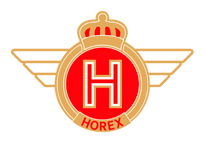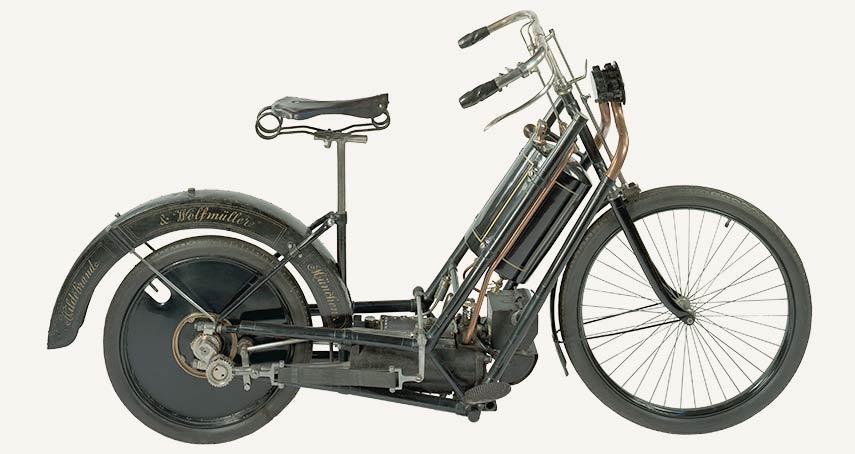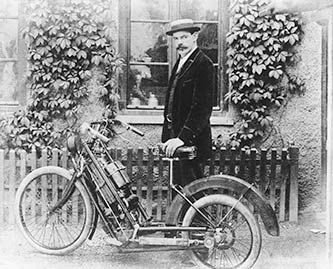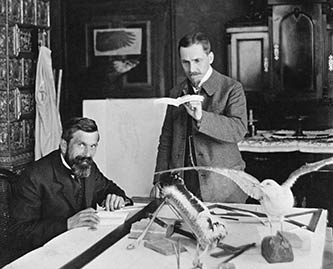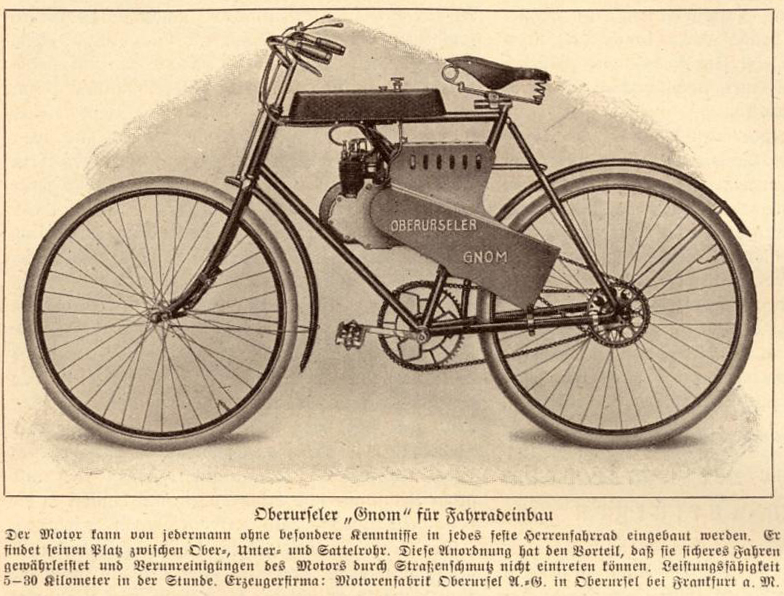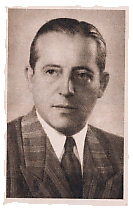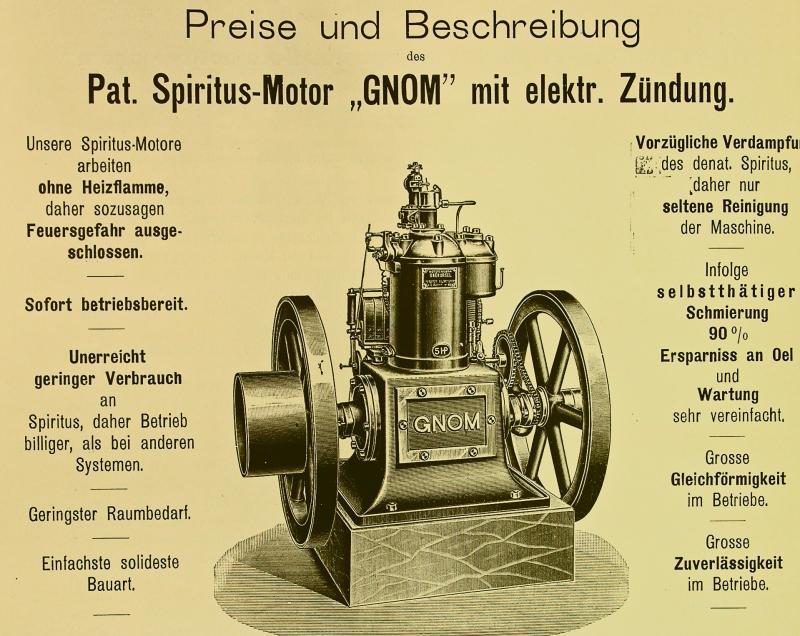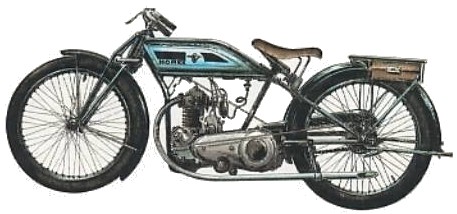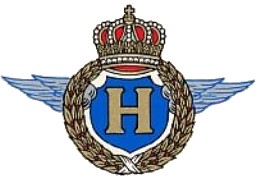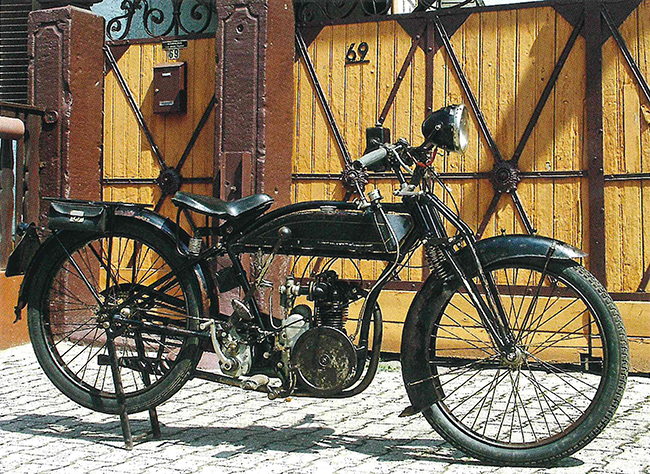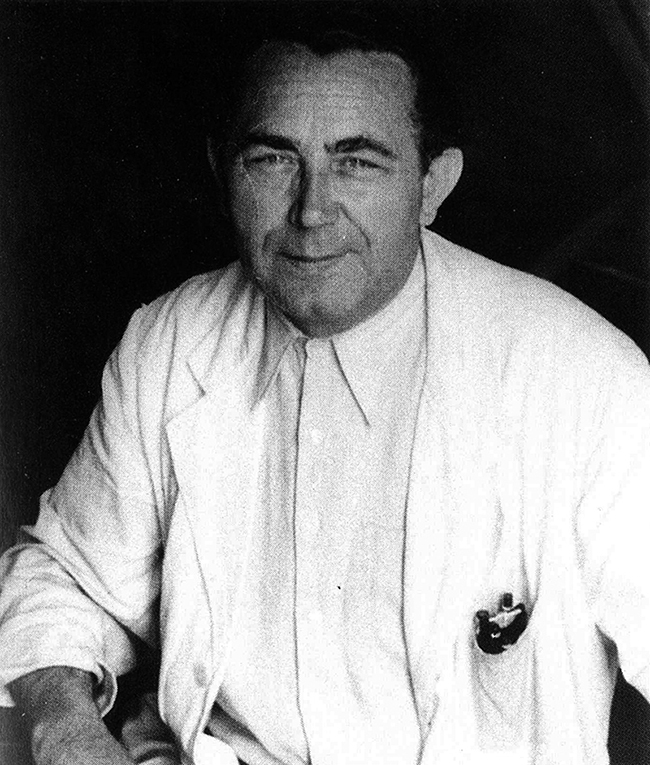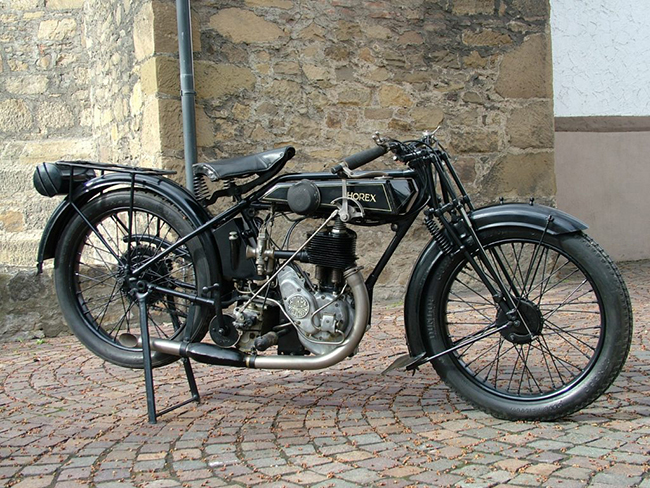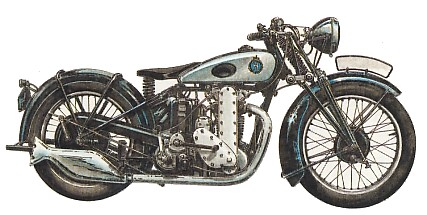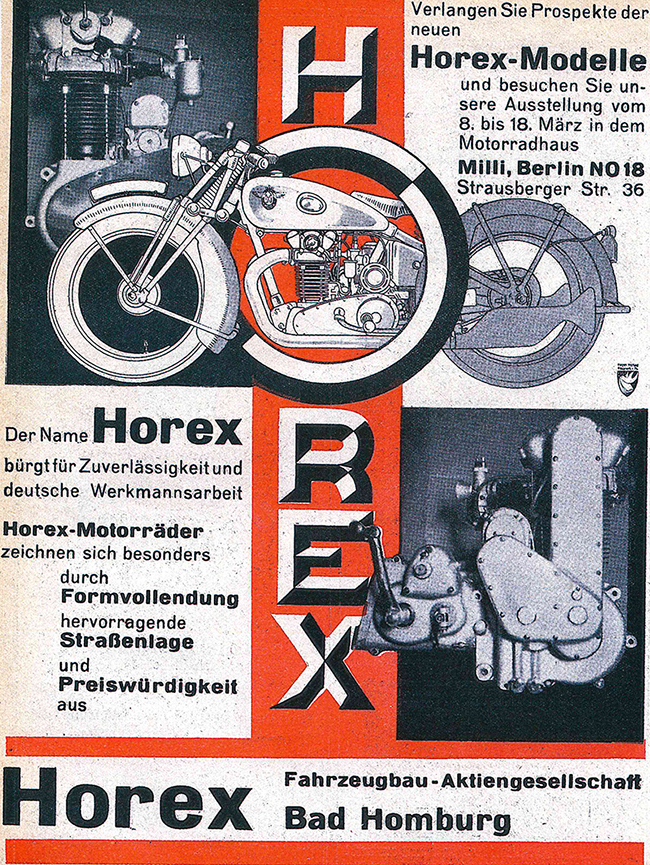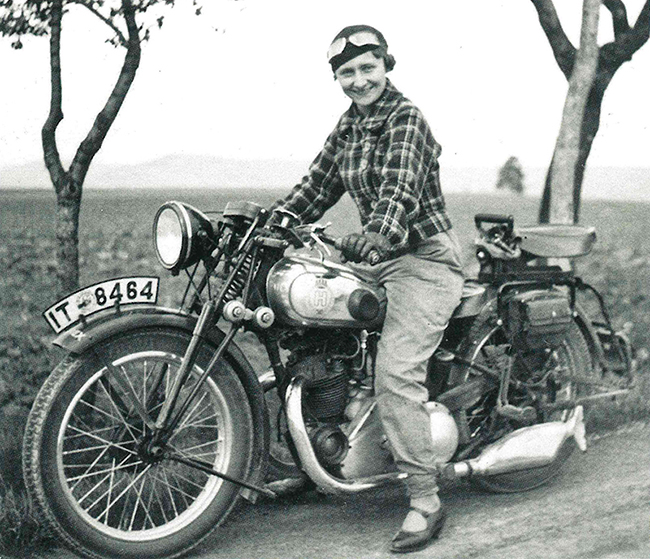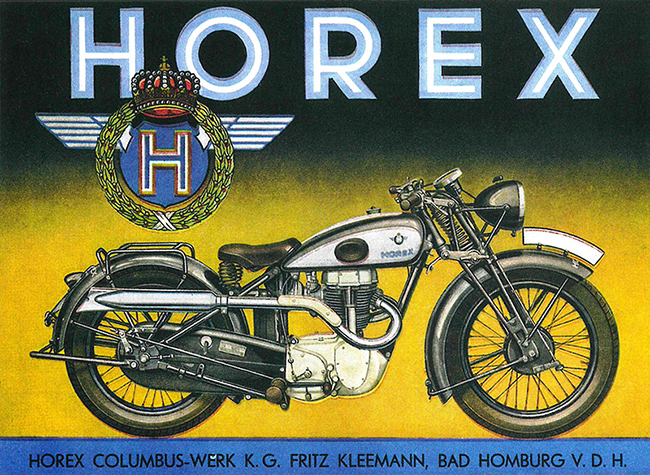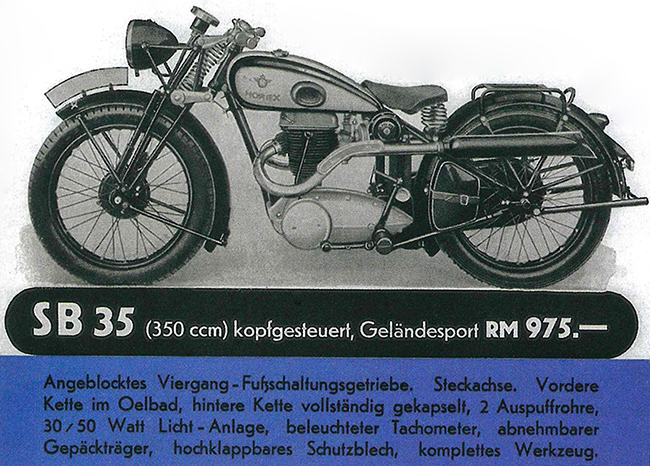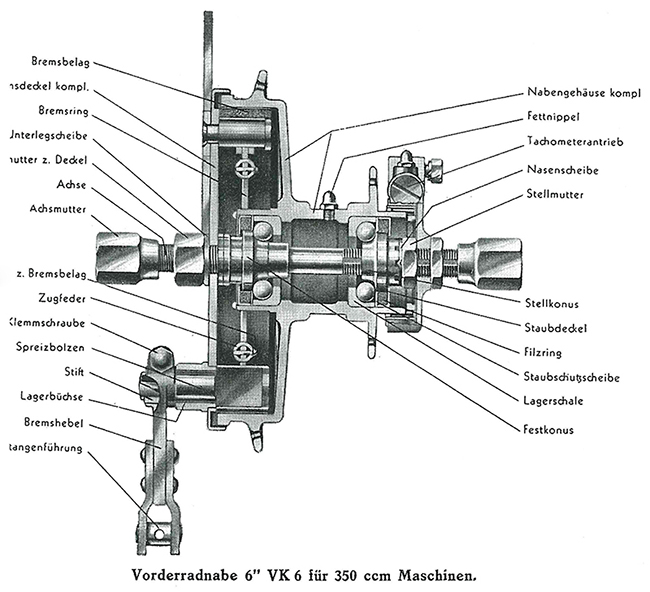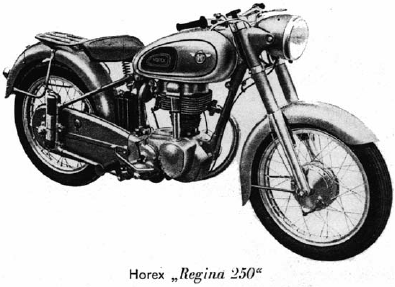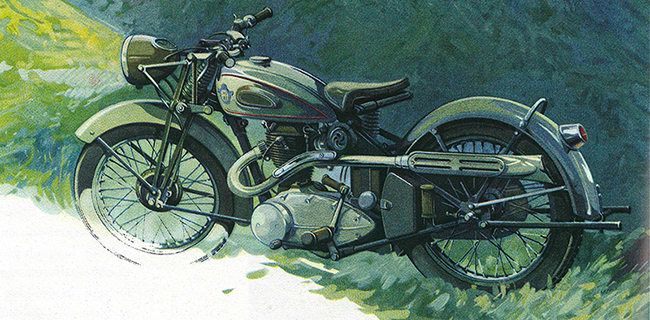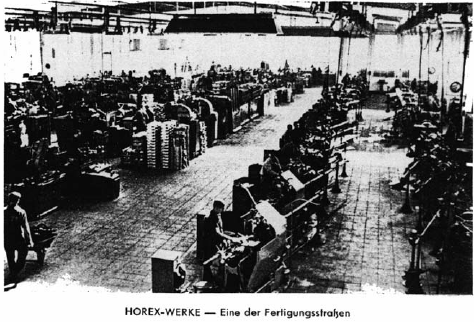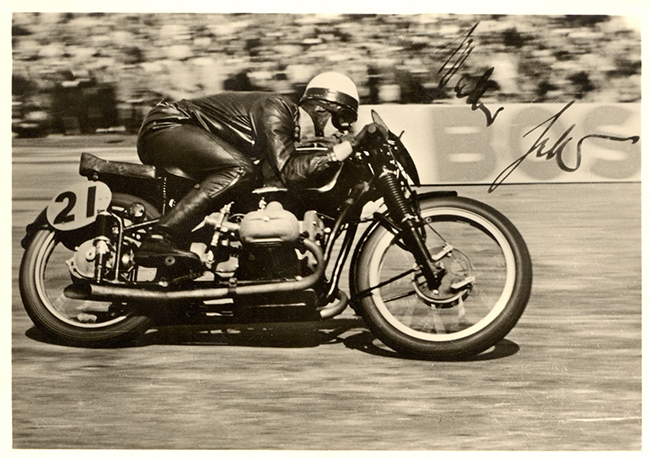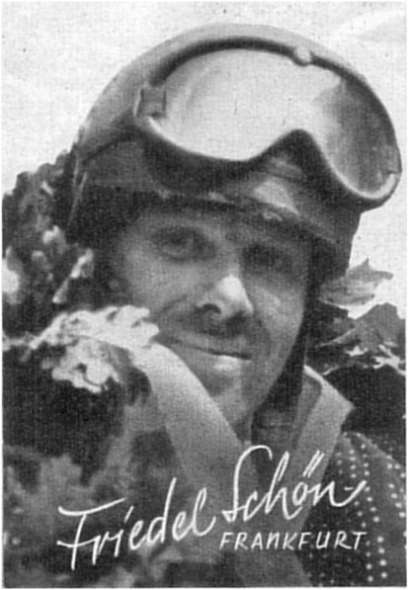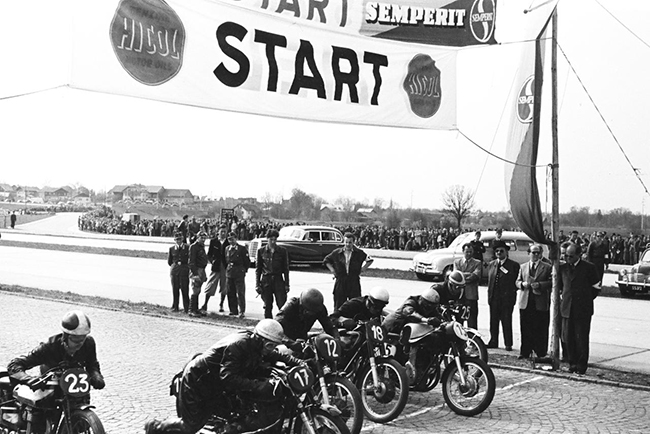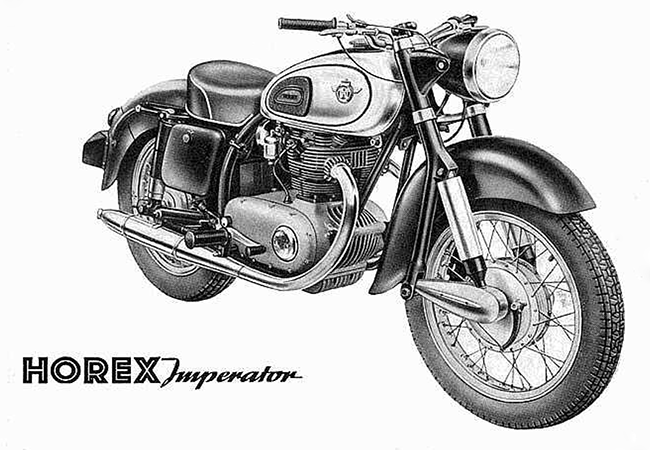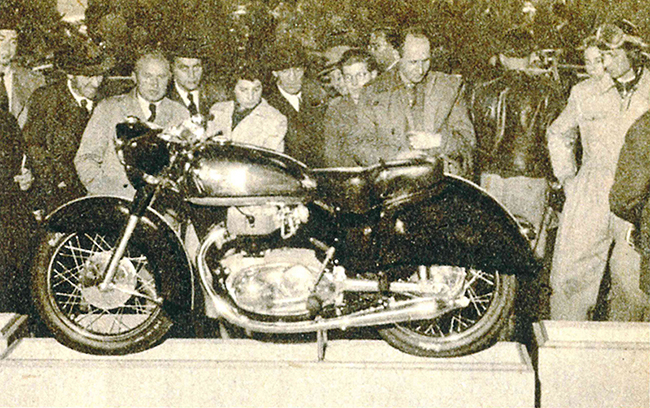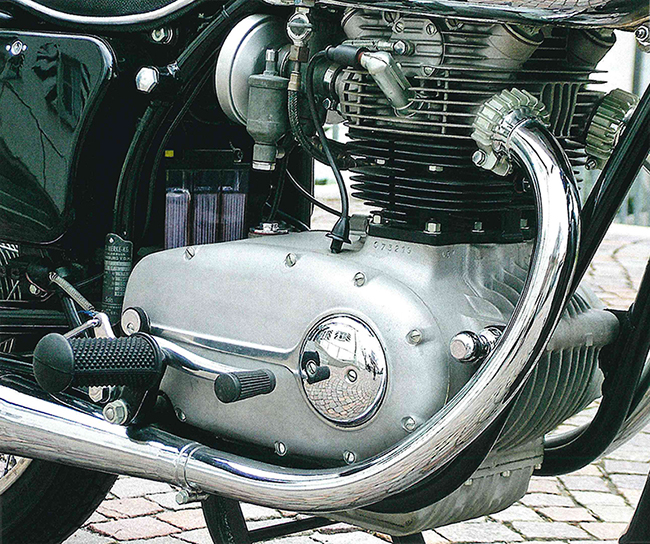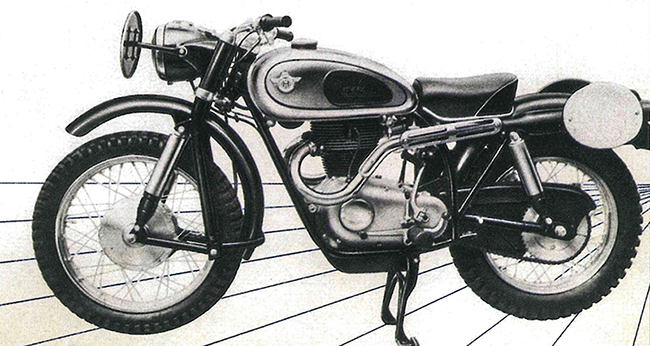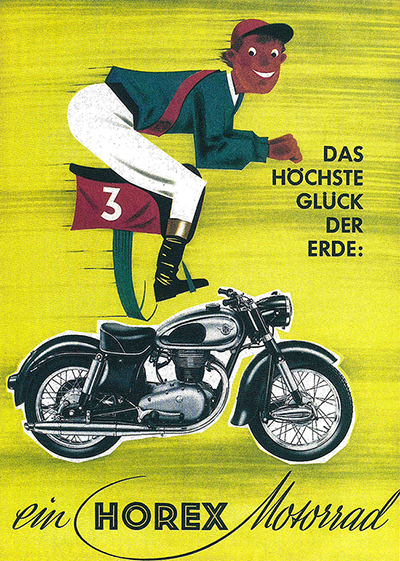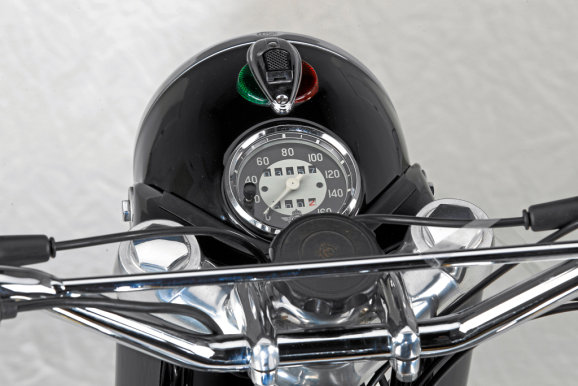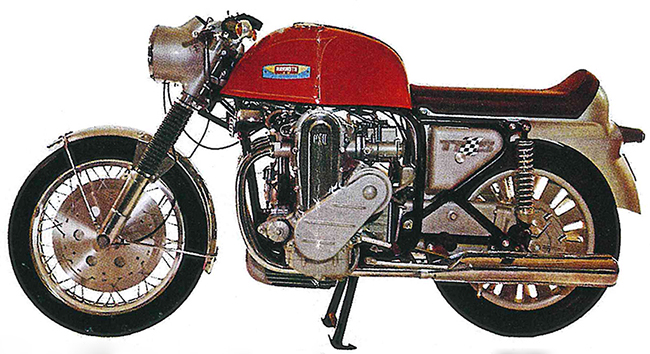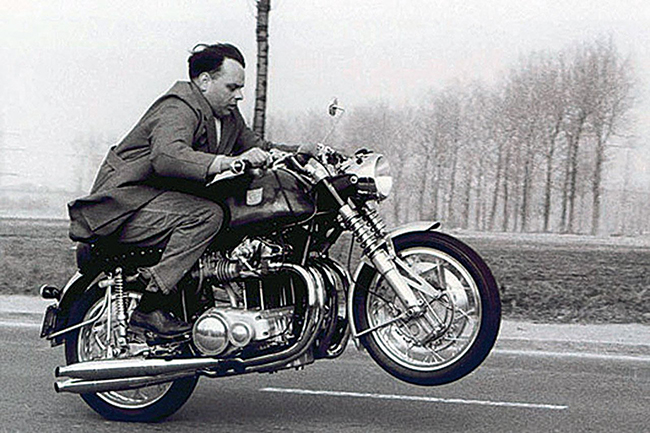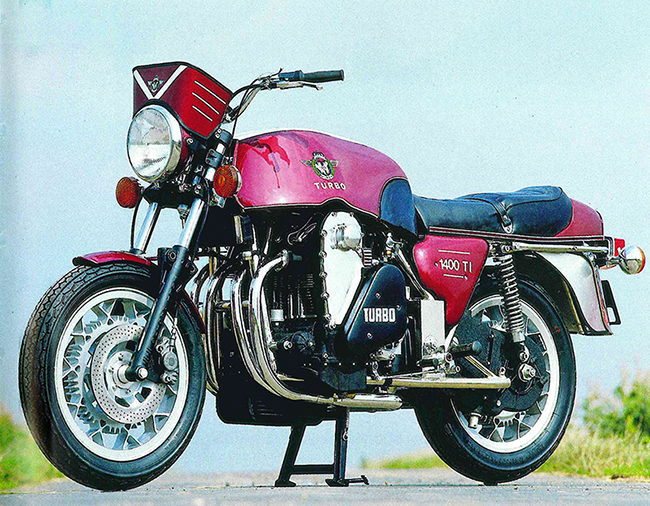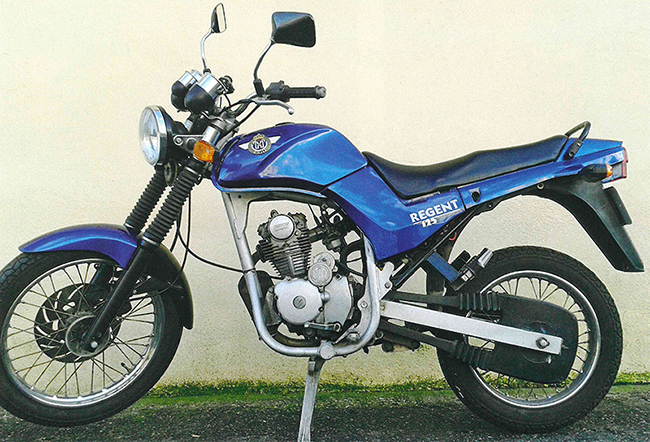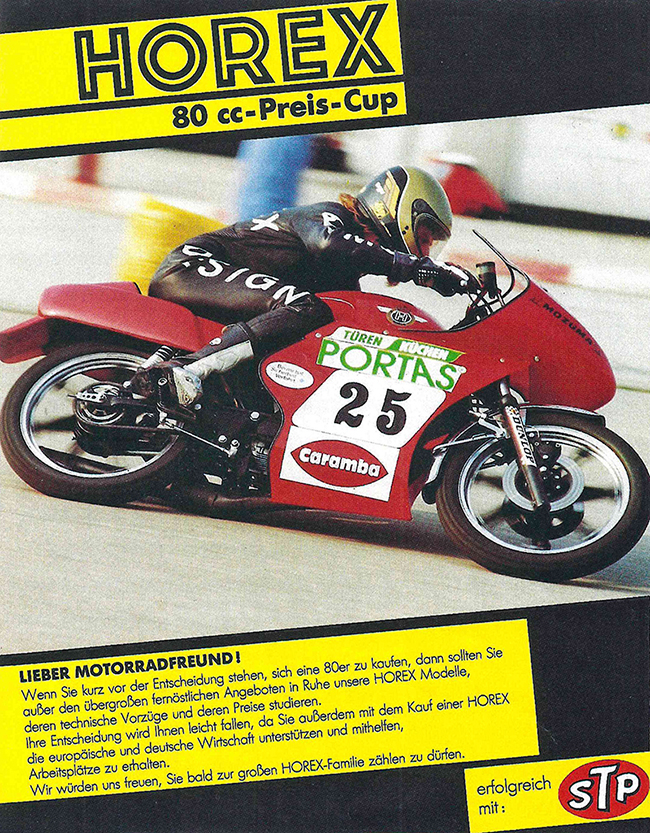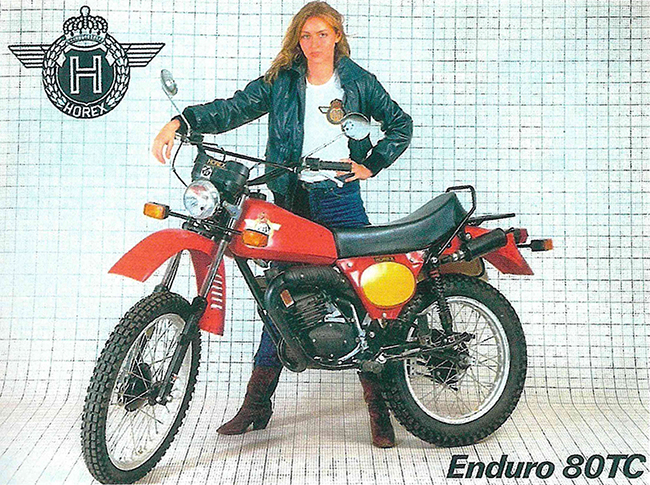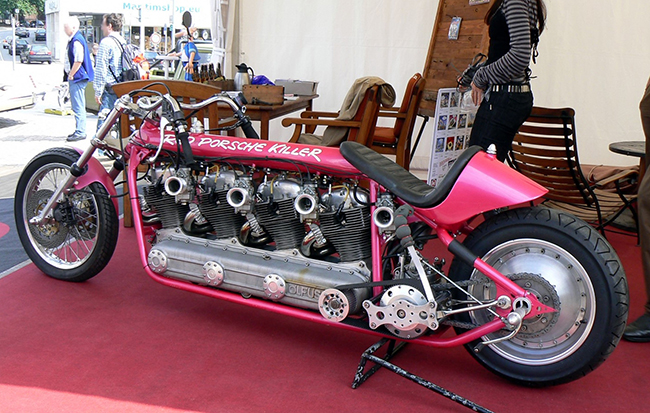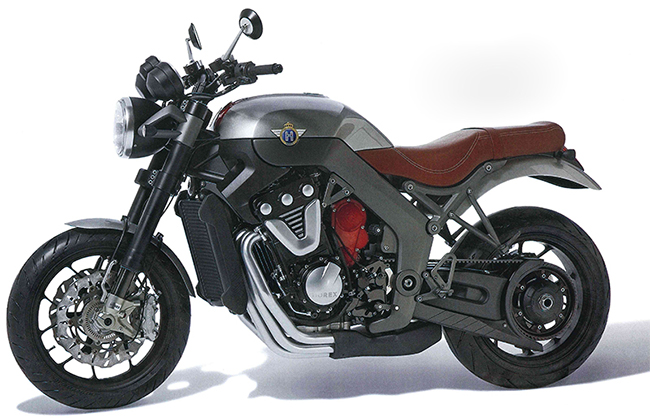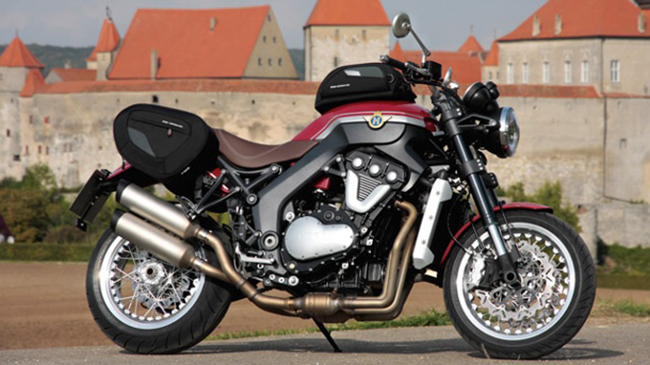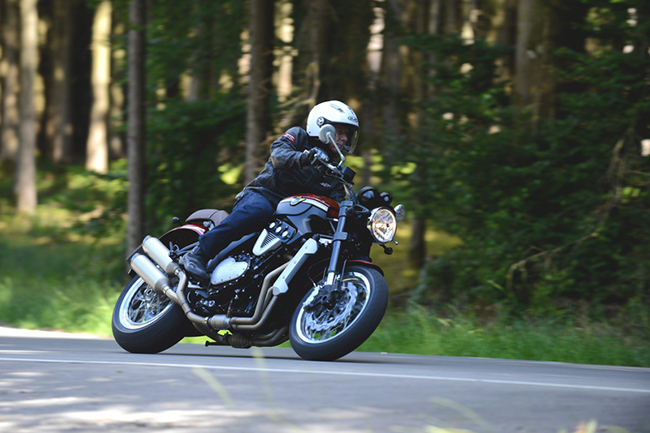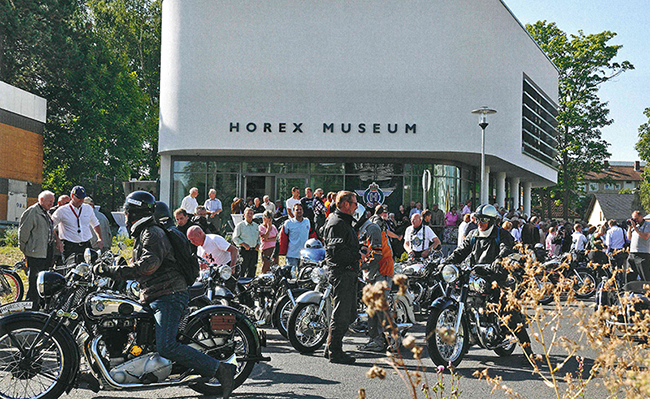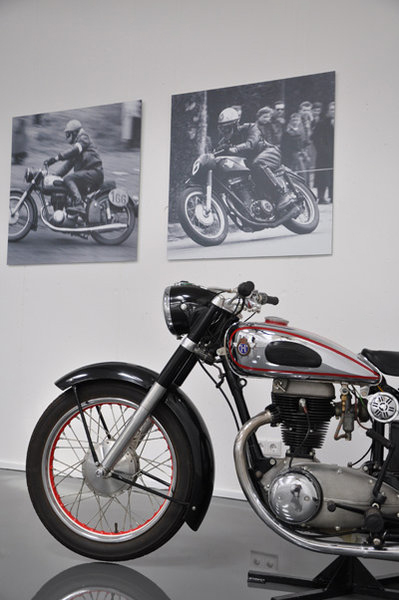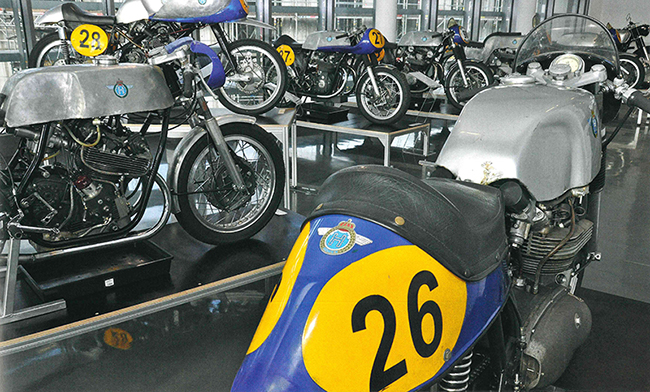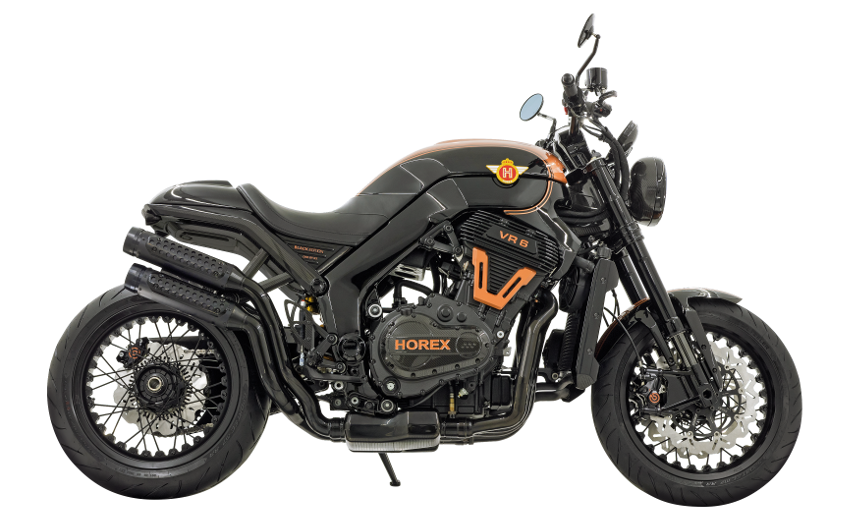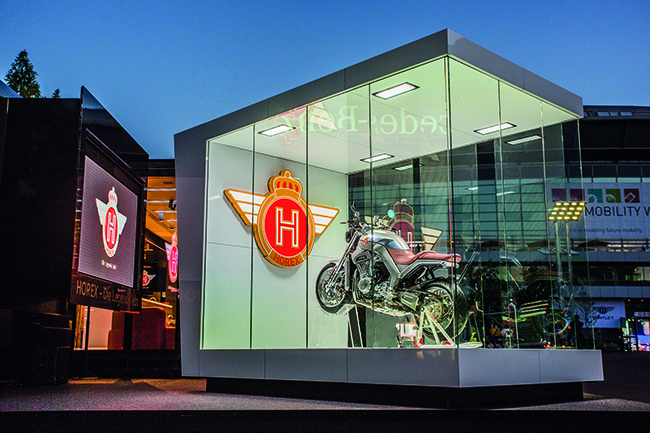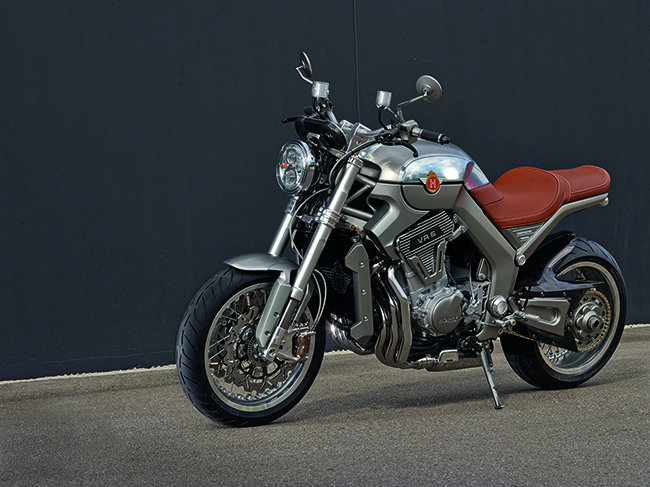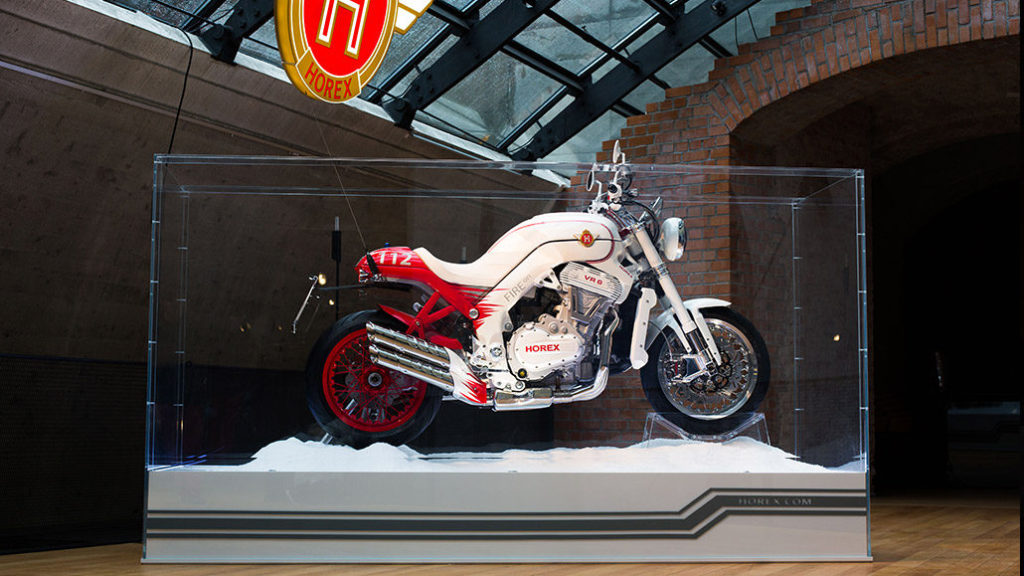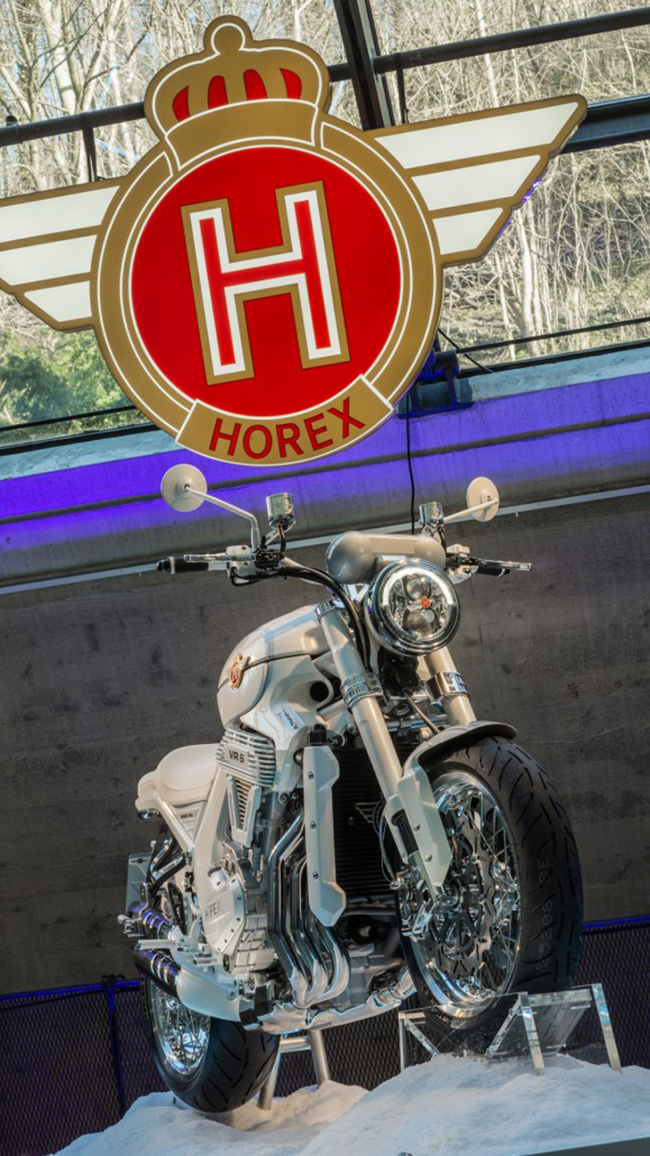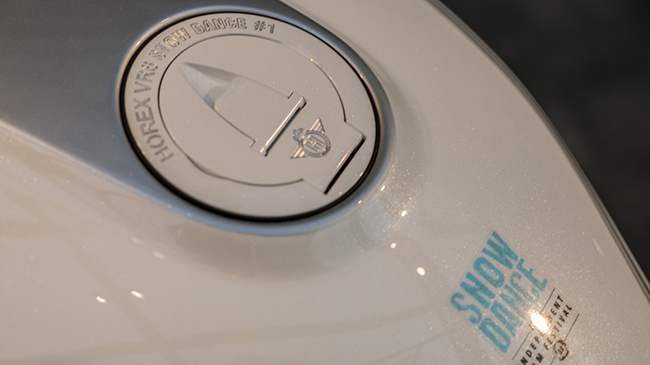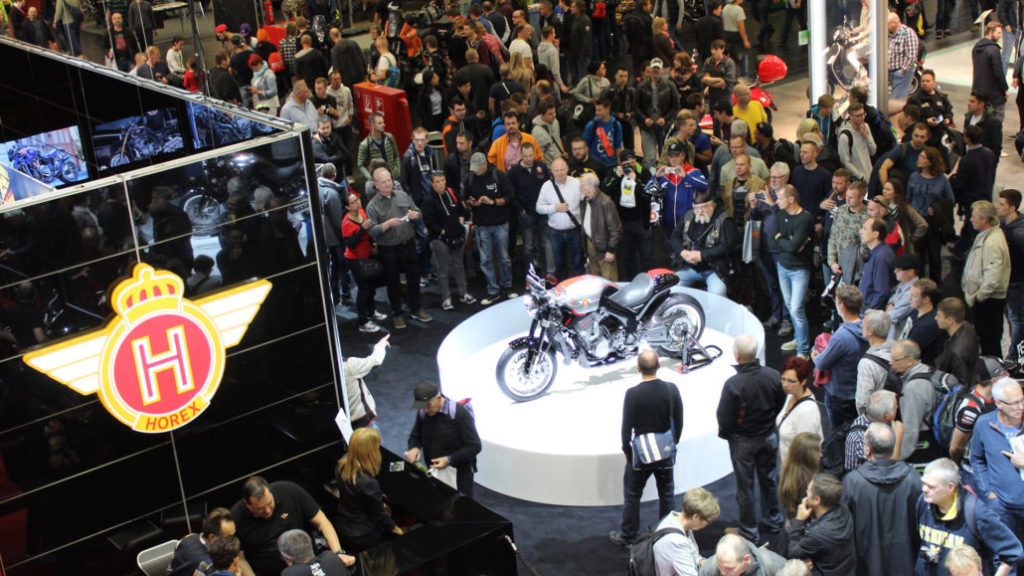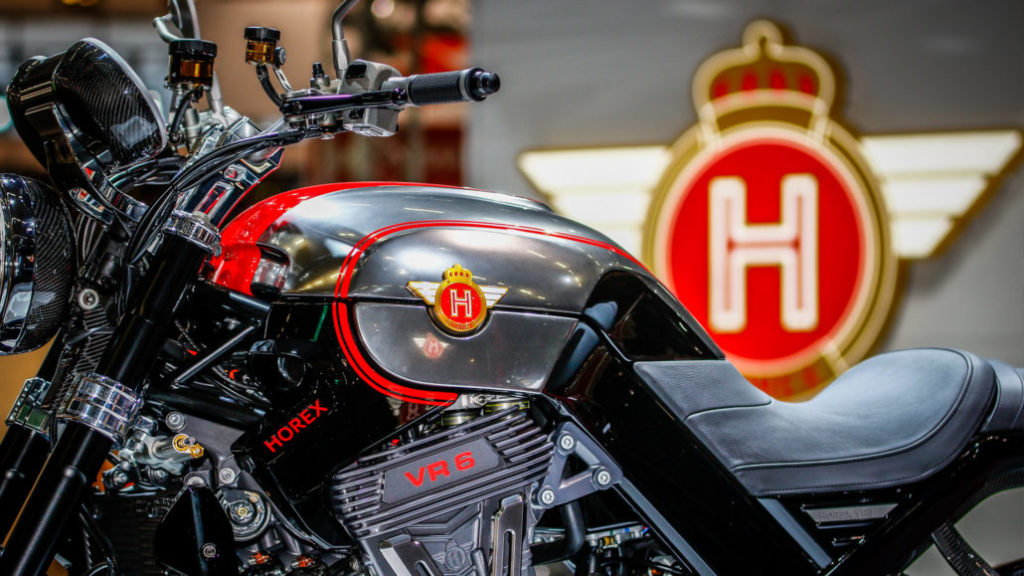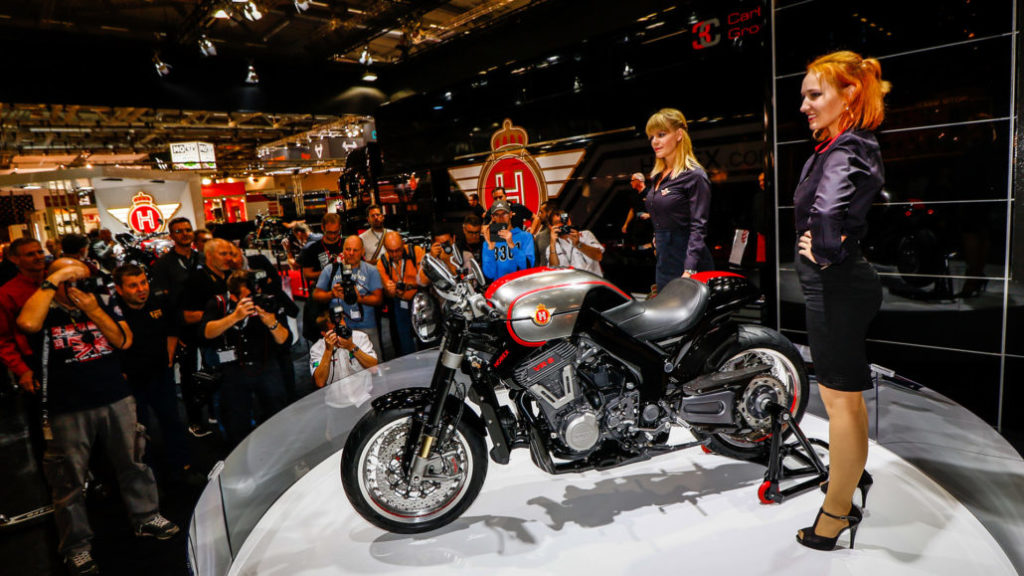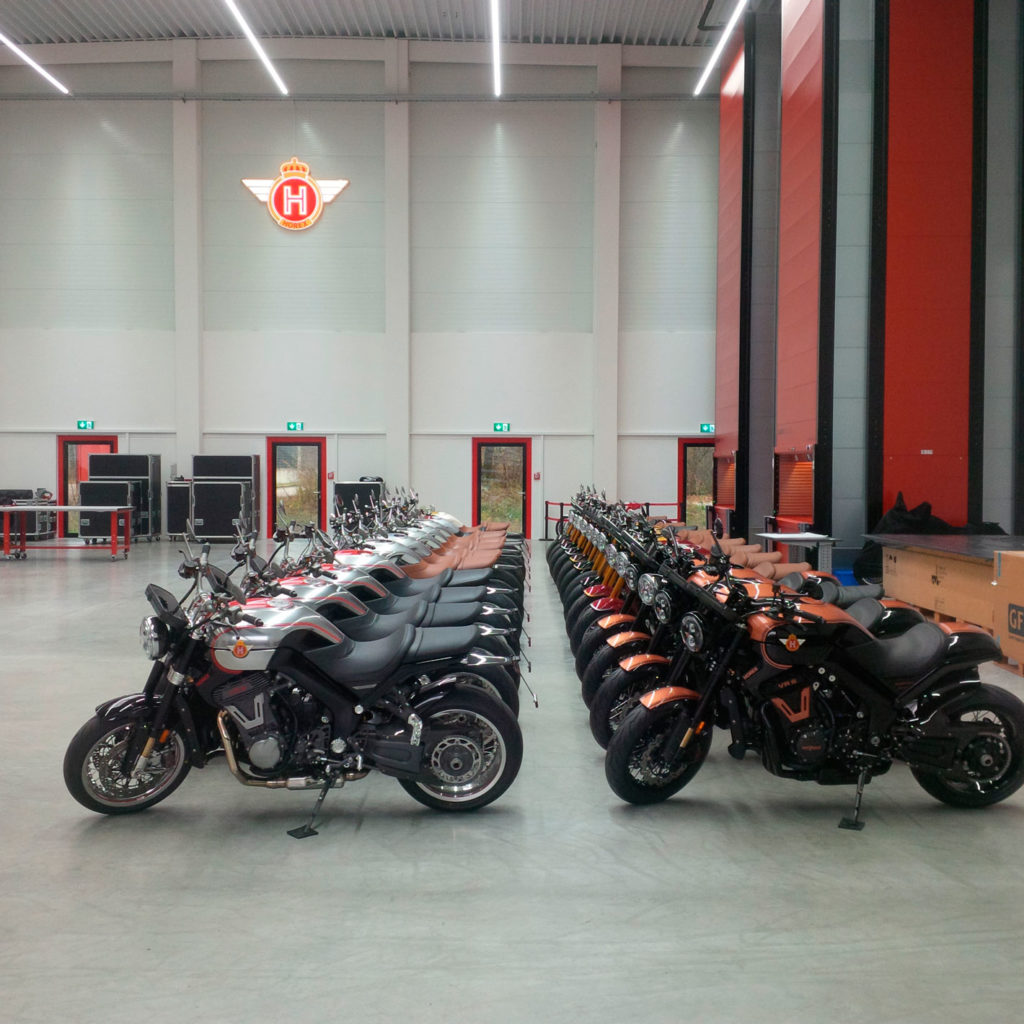The motorcycle – made in Landsberg am Lech
Alois Wolfmüller and a few of his friends invent the series production motorcycle in a small machine factory in the historic town centre of Landsberg am Lech and patent the German word for motorcycle, “Motorrad”. Some 120 “Hildebrand & Wolfmüller” were built in all; eight originals still exist today. Barely 300 km away as the crow flies in Bad Homburg, Friedrich Kleemann is only just 16 years old and is probably not even thinking about building motorcycles yet.
Getting started with 1 HP
Kleemann, a successful manufacturer of jam jars since 1918, takes on a majority holding in Columbus Motorenbau GmbH in Oberursel (Taunus). That is where the 1-HP auxiliary motor named “Gnom” was already being manufactured, which Fritz Kleemann (Friedrich’s son) mounts in front of the bottom bracket on purchased bicycles. Principal engineer at Columbus: Eduard Freise.
The HOREX story begins
At the age of 22, Fritz Kleemann founds HOREX Fahrzeugbau AG and is already using the distinctive company logo. He creates the name by combining the name of his home town, Bad Homburg, and “Rex”, the tradename of his parents’ jam jar factory. He quickly celebrates significant racing achievements with his first model, another 250 cm³ cycle designed by Eduard Freise. Kleemann’s HOREX motto: “Made by motorcyclists for motorcyclists”.
Fusion with Columbus
To resolve financial problems in both companies, Columbus and HOREX join together. The new company is called “HOREX-Columbus”. This name is officially kept until 1953 and sometimes appears on the motorcycles. The great HOREX constructor Hermann Reeb (d. 1990) starts creating them in 1927.
Reeb’s pioneering construction
Hermann Reeb constructs several motors for HOREX over the years that are ahead of their time. In 1932, he builds a parallel two cylinder with triple mounted overhead camshaft that causes a sensation, especially in racing. Among other achievements, Karl Braun wins the German Sidecar Championship (1000cm³) with it in 1935. As a 600 cm³ “S6” and an 800 cm³ “S8”, only about 200 are built, of which very few still exist. The sporty models S35 and S/SS64 as well as the S5 and once again the S6 follow.
The “SB 35” success story
HOREX builds the “SB35” (Sportblock 35) as the technical masterpiece of the time. The engine sells successfully up to the beginning of the war and is also supplied to the Victoria factories in Nuremberg where it is incorporated into several models. After the outbreak of WWII, the production of motorcycles in Bad Homburg must be interrupted. The SB35 is then once again built, starting in 1948, practically unchanged. It can hold a sidecar and will later serve as the basis for the “Regina”.
The legendary “Regina”
For the first time, a motorcycle is given a woman’s name instead of a purely functional description and motorcycle enthusiasts still connect to the HOREX tradition, especially the “Regina”. Pioneering design, an outstanding finish in chrome and special paint, the most modern technology and reliability make the model a bestseller starting in 1952 (more than 20,000). In all, about 83,000 cycles are constructed with one leaving the factory every seven minutes. Until 1955, the “Regina” continues to be technically upgraded (camshaft, exhaust, cylinder head); then in addition to the “Sport” version, 250 cm³ and 400 cm³ versions are also offered.
Friedel Schön collects victories and titles
Not least thanks to its success in racing, HOREX establishes itself as a well-known manufacturer over the years. Before the war, Kleemann himself and Karl Braun brought home the victories; after 1950, it is Friedel Schön from Frankfurt in particular who draws attention to himself and HOREX. In 1951, he wins the Feldbergrennen and the German Concrete Track Championship on the 350 cm³ bike. In 1952, Schön is employed as the factory driver. Although the newly developed 500cm³ “Imperator” is still suffering from teething troubles, Schön wins the Mai-Pokal race in front of 200,000 spectators at the Hockenheimring as well as at AVUS.
Serial production of the “Imperator” starts
The prototype of the “Imperator” is introduced at the 1952 IFMA. After its racing achievements, it is then mass produced in a 392 cm³ 26 HP version in 1954 followed by a 450 cm³ (30 HP) version. For the first time, the new two-cylinder model offers a full swingarm chassis for the series. Above all, however, the drive (whether chain or vertical shaft) in a shaft between the cylinders is patented for the overhead camshaft – a principle that is adopted by many manufacturers after HOREX later stops production.
Production ends
Sales start collapsing in 1954, even the “Imperator” and the “Resident” (the 1955 successor to the “Regina”) could not change that. HOREX must recognize that automobiles are becoming increasingly popular in economically strong post-war Germany. A further complicating factor is that insurance premiums for motorcycles over 200 cm³ increase drastically. In 1956, motorcycle production is abandoned and plans for small cars are no longer implemented. HOREX still produces children’s toys and metal shears, and also produces car parts for Daimler-Benz. The car manufacturer takes over the factory and continues to use it for some time to manufacture components before closing it in 1960.
Friedel Münch enters the stage
Friedel Münch (d. 2014), a gifted engineer and son of a HOREX dealer, had worked for Kleemann himself for several months. The latter gives him the rights to the HOREX logo via handshake after the “phase-out”. He acquires tools, motorcycles and 50 “Imperator” gearboxes from a scrap dealer. Münch is still known for technical innovations and his big four-cylinder “Mammut” motorcycles. In 1977, he founds HOREX Motorrad GmbH, but only constructs three of the powerful “HOREX 1400 TI” before giving up the name rights. Despite financial and health problems, Münch continues to work on spectacular projects up through 2001.
Changing owners
Although motorcycles are sold on and off under the traditional name after 1980, they have nothing to do with the original technology and quality standards. At first, the motorcycle importer Fritz Röth takes over the rights and has a variety of foreign manufacturers put together the engines and chassis. In 1990, he passes the brand onto the German subsidiary of the Indian Bajaj Motor Company, which uses MZ and Jawa parts for the “Regent” and “Imperator” up through 1998. Hörmann-Rawema in Chemnitz then holds the brand rights until 2009.
200,000 at the “Werner Race”
At a time when nearly only nostalgic fans speak of HOREX, a comic book character shines a spotlight on the brand: “Werner”, a character invented by Rötger Feldmann, has a real soft spot for the traditional brand. Feldmann, who drives an old HOREX himself, translates the idea of a race against a sports car into real life. Actually, the illustrator wants to have four original HOREX engines built into the “Red Porsche Killer”. For technical reasons, however, most of the parts are manufactured individually. In September 1988, more than 200,000 fans come to the Hartenholm airport to watch as Feldmann unfortunately fumbles the gears, barely losing the 600-metre race against the Porsche.
First VR6 trial
In 2009, the HOREX brand is bought by the mechanical engineer and IT specialist Clemens Neese along with partners. Neese goes public with a spectacular plan in 2010: He will construct an innovative HOREX-type engine, the first VR6 in a motorcycle. Even the prototypes draw a lot of attention, but the transition into serial production is unfortunately years behind schedule and rife with serious technical problems. A variety of teething troubles are apparent in the motorcycles with the fascinating approach and the project also suffers from diverse logistical difficulties. Despite numerous efforts to stabilise the company with the help of additional bank loans, as well as millions from investors and in subsidies, it is all over in August 2014. HOREX GmbH in Augsburg under Neese’s management must apply for bankruptcy.
HOREX receives a museum
The town of Bad Homburg, which has always been proud of the strong tradition of the HOREX brand, decides in 2010 to build it a museum. Construction begins in 2011; the approximately 1.6-million-euro building is ceremoniously opened in September 2012 not far from the company’s former premises. Since then, the 380 square metres are home to exhibitions with items from public and private collections that change every six months.
Saved by 3C-Carbon
Motorcycles are not new to the 3C-Carbon Group AG in Landsberg am Lech. Due to the interrelationship between lightweight construction technology and elite motor sport, the company is represented at the Superbike IDM (International German Championship) since 2013. The company’s racing team wins numerous victories there, including the Driver’s Manufacturers’ Championship in 2014 as well as 2nd and 3rd place in 2015. Nonetheless, 3C examines the difficult situation of the insolvent HOREX GmbH in Augsburg intensively before entering the bidding race for the traditional brand. Once it is acquired, the speed of things really picks up: in a record-breaking six months, the “Silver Edition” is produced and then introduced at the 2015 IAA. The equally spectacular “Black Edition” follows a short time later. This is generally perceived to be the stunning beginning of the resurrection of a great German brand.
Dazzling appearance in the city of motorcycles, Landsberg
It all comes full circle on 29 January 2016: Exactly 122 years after Wolfmüller builds the first series production motorcycle in the world, HOREX once again presents – mere metres from the historic workshop – a motorcycle produced in Landsberg. At the Snowdance Film Festival, several thousand visitors admire the “Snowdance Edition” of the new VR6 – an unsaleable one-of-a-kind that makes Landsberg once again the city of motorcycles.
At various trade fair appearances, the new HOREX models are extremely well received. A special highlight is the world premiere of the Heritage Line model variant at the world’s largest two-wheeler trade fair Intermot in Cologne with 220,000 visitors.
In Landsberg am Lech the series production of the new HOREX VR6 models starts. The delivery of motorcycles to the first customers begins.
